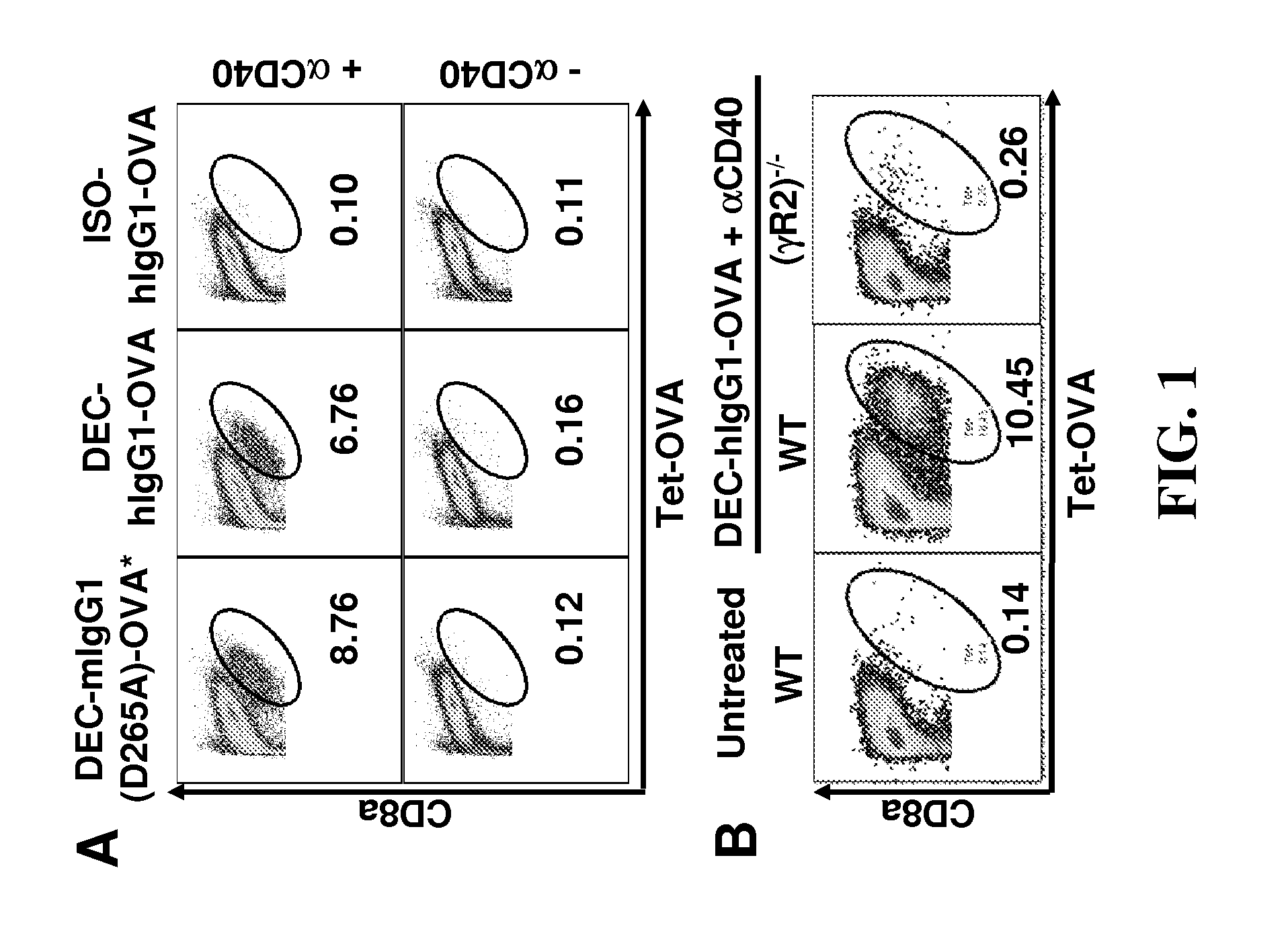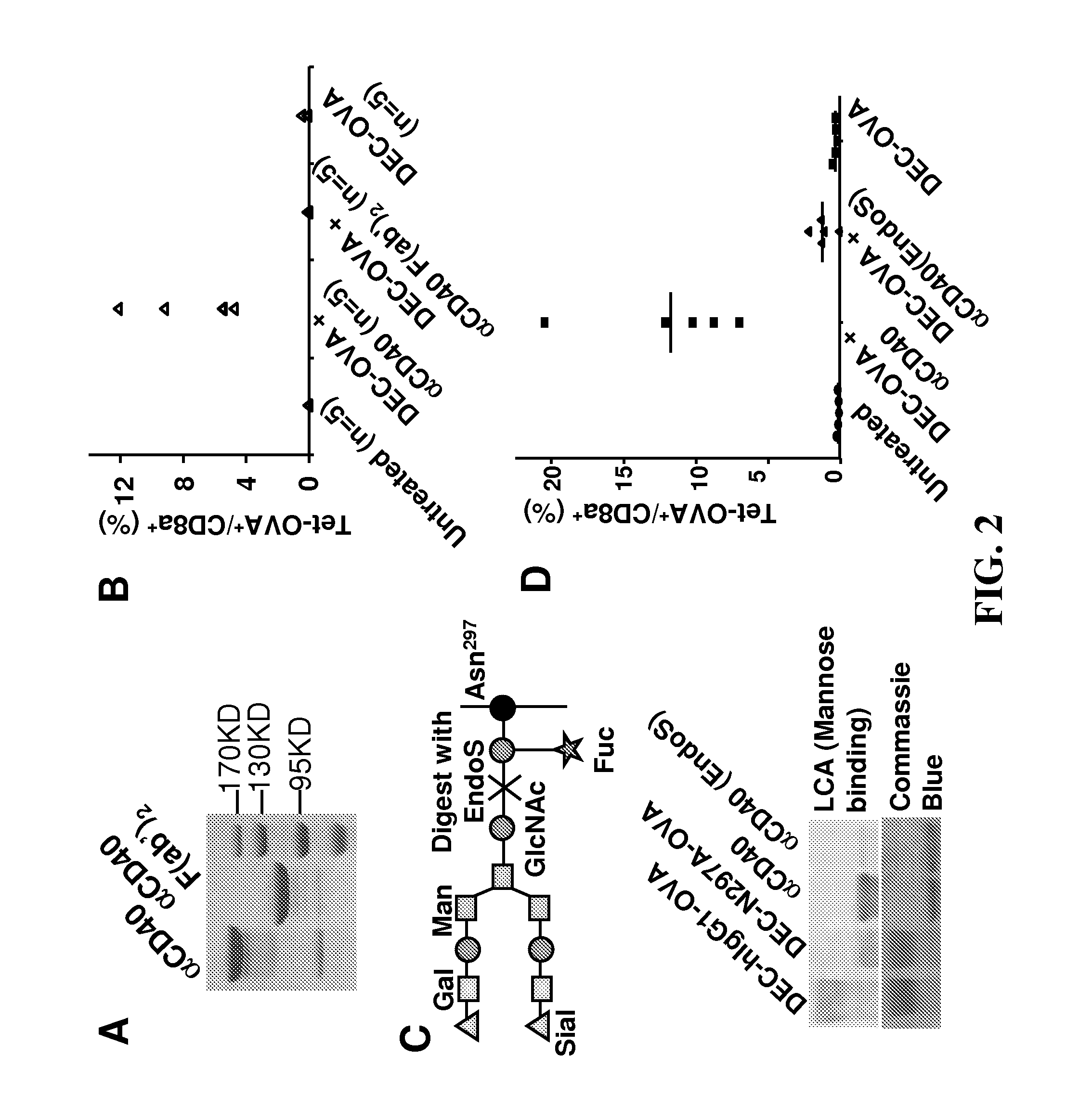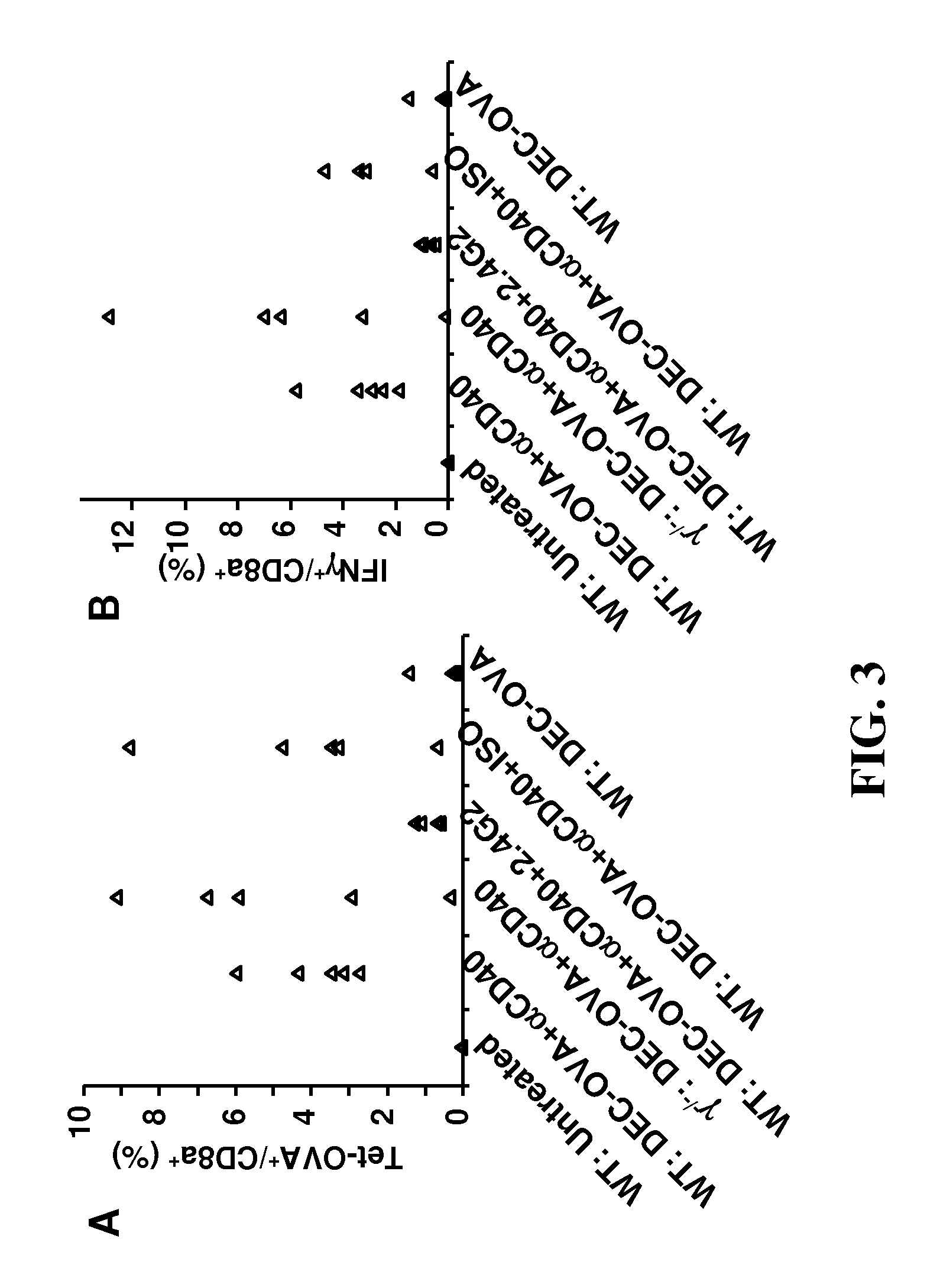Modulating agonistic tnfr antibodies
a technology of agonistic tnfr and antibody, applied in the field of agents, can solve the problems of unsuitable therapeutic administration, unknowable, relative non-specific components, etc., and achieve the effects of enhanced agonistic activity, enhanced adjuvant activity, and enhanced binding affinity
- Summary
- Abstract
- Description
- Claims
- Application Information
AI Technical Summary
Benefits of technology
Problems solved by technology
Method used
Image
Examples
example 1
Materials and Methods
[0081]A. DEC-OVA:
[0082]DEC-OVA and ISO-OVA in mIgG1 (D265A) form were produced as previously described in Boscardin et al., J Exp Med. 2006 Mar. 20; 203(3):599-606. In order to make DEC-hIgG1-OVA, DEC-hIgG1(N297A)-OVA and ISO-hIgG1-OVA, the constructs of DEC-mIgG1(D265A)-OVA and ISO-mIgG1(D265A)-OVA's heavy chains were modified so coding sequences of wild-type human IgG1 constant region or N297A mutant could replace DNA for the mouse IgG1(D265A) constant region. The constructs of DEC-mIgG1(D265A)-OVA and ISO-mIgG1(D265A)-OVA's light chains were also modified so coding sequences of DNA encoding human IgK could replace mouse IgK coding sequences. More specifically, the variable and constant regions were separately cloned in frame by PCR and ligated together by overlapping PCR using standard protocols. Full-length Ig coding sequences were digested with EcoRI / NheI and subcloned into the original DEC-mIgG1(D265A)-OVA heavy and light chain vectors.
[0083]The following ...
example 2
Anti-CD40 mAb Requires FcγRs for its Adjuvant Activity
[0121]In order to investigate whether FcγRs regulate adjuvant effect of an agonistic anti-CD40 monoclonal antibody (αCD40 mAb, clone 1C10, rat IgG2a), the targeted antigen delivery system established at The Rockefeller University was exploited. This system uses anti-DEC-205 antibody to deliver model antigen OVA fused to the C-terminal of the antibody, and uses this agonistic αCD40 mAb as adjuvant. FIG. 1 illustrates that FcγRs are required for OVA-specific T cell response induced by DEC-hIgG1-OVA (OVA fused to an anti-DEC205 antibody with human IgG1 constant region) and αCD40 mAb. As previously reported and confirmed in FIG. 1A, mice immunized with DEC-OVA (OVA fused to anti-DEC205 antibody) develop OVA-specific CD8+ T cell response that was detected by both OVA-peptide SIINFEKL tetramer (Tet-OVA, H-26 with OVA peptide SIINFEKL) staining and intracellular IFN-γ staining following in vitro T cell stimulation. But this response is ...
example 3
FcγRIIb Provides Necessary FcγR-Interaction for αCD40 mAb's Adjuvant Effect
[0124]In order to further characterize the FcγR-requirement for αCD40 mAb's adjuvant effect, mice with mutations in FcγR genes were tested in the DEC-OVA model. As shown in FIGS. 3A and 3B, the FcR common γ-chain deficient mice (γ− / −) had no defect in the OVA-specific T cell response induced by DEC-OVA and αCD40 mAb, suggesting all activating FcγRs were dispensable. In contrast, FcγRIIb knockout mice were completely defective in this response (FIG. 3C), and this defect was not due to any developmental problems in these mice as 2.4G2 blocking antibody for FcγRIIb and FcγRIII can block this response in wild-type B6 mice (FIGS. 3A and 3B). Taken together, these data demonstrated that αCD40 mAb's adjuvant effect requires FcγRIIb-interaction.
[0125]FIG. 3A provides a graph showing the percentage of Tet-OVA+ in splenic 7AAD− CD8a+CD4− cells. Wild-type B6 and (γ− / −) mice were immunized with 5 μg of DEC-OVA and 30 μg ...
PUM
| Property | Measurement | Unit |
|---|---|---|
| Pharmaceutically acceptable | aaaaa | aaaaa |
| Inhibition | aaaaa | aaaaa |
Abstract
Description
Claims
Application Information
 Login to View More
Login to View More - R&D
- Intellectual Property
- Life Sciences
- Materials
- Tech Scout
- Unparalleled Data Quality
- Higher Quality Content
- 60% Fewer Hallucinations
Browse by: Latest US Patents, China's latest patents, Technical Efficacy Thesaurus, Application Domain, Technology Topic, Popular Technical Reports.
© 2025 PatSnap. All rights reserved.Legal|Privacy policy|Modern Slavery Act Transparency Statement|Sitemap|About US| Contact US: help@patsnap.com



